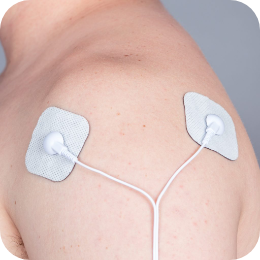Our PAT treats the following shoulder pain conditions.
Shoulder Pain
- SHOULDER ARTHRITIS
- TENDINITIS
- SHOULDER BURSITIS
- ROTATOR CUFF TEAR OR SPRAIN
- SHOULDER MUSCLE STRAIN
- GENERALIZED SHOULDER PAIN
Shoulder arthritis is a wearing down of the ball and socket joint (gleno-humeral) or the attachment of the collarbone (clavicle) as it connects with the part of the shoulder blade that comes over the top of the shoulder (acromion process) to make the acromio-clavicular joint (a common sports injury area, also known as the A-C joint). Wear and tear of these joints can lead to loss of cartilage at the end of the bones resulting in arthritic inflammation, pain and swelling.
Rotator cuff tendinitis, or tendonitis, occurs when the tendons and muscles that help rotate the shoulder joint are inflamed or irritated. It may also be called impingement syndrome.
This condition usually occurs over time. It can be the result of keeping the shoulder in one position for a while, sleeping on the shoulder every night, or participating in activities that require extending the arm over the head.
Sports that require extending the arm over the head can commonly lead to rotator cuff tendinitis. This is why the condition may sometimes be referred to as:
• swimmer’s shoulder
• pitcher’s shoulder
• tennis shoulder
Pain and immobility are common complications of rotator cuff tendinitis. The combination of both will cause a decrease in strength and flexibility, limit your ability to lift or raise things, and can eventually affect your ability to dress, reach above your head without pain or weakness and activities of daily living in general.
Sports that require extending the arm over the head can commonly lead to rotator cuff tendinitis. This is why the condition may sometimes be referred to as:
• swimmer’s shoulder
• pitcher’s shoulder
• tennis shoulder
Pain and immobility are common complications of rotator cuff tendinitis. The combination of both will cause a decrease in strength and flexibility, limit your ability to lift or raise things, and can eventually affect your ability to dress, reach above your head without pain or weakness and activities of daily living in general.
Bursitis of the shoulder can take place in two general places:
• Subdeltoid bursa- pain on lateral aspect of upper arm at shoulder
• Subacromial bursa
• Subdeltoid bursa- pain on lateral aspect of upper arm at shoulder
• Subacromial bursa
Rotator Cuff Tear or Sprain
Shoulder muscle strain
Generalized shoulder pain

For shoulder pain, use this photo as a guide for electrode placement.